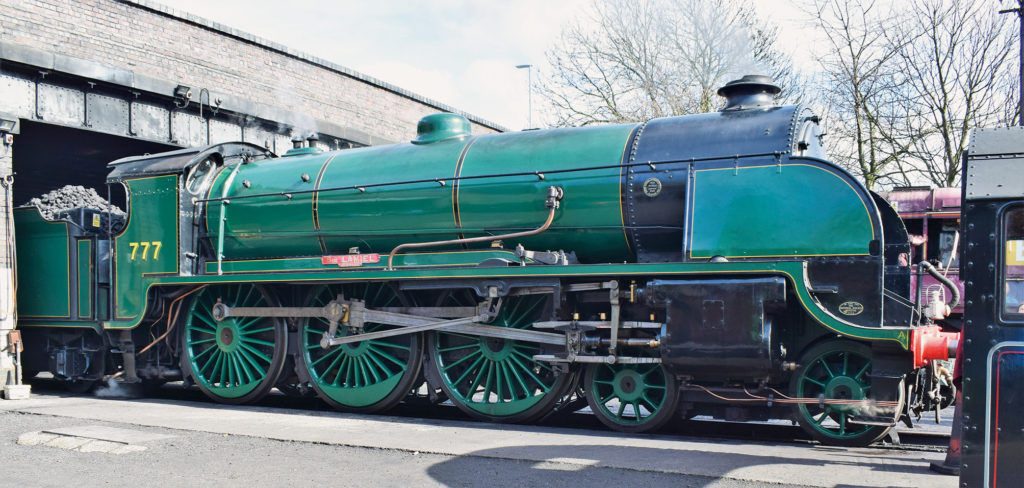The North British Locomotive Company by Colin Alexander
In July 1980, aged 16, during a family holiday in the Cotswolds I made the pilgrimage to South Wales and the legendary Woodham’s scrapyard on Barry Island. As well as wishing to photograph the rusting hulks of over a hundred ex-British Railways steam locomotives which had languished there since the 1960s, there were two other items of interest that I was keen to see. They were the last two remaining ex-BR main line diesel locomotives built at the North British Locomotive Company in Glasgow.

One was D601, once the pride of BR Western Region, and previously carrying the name ARK ROYAL. She was one of five 2000hp ‘Warship’ class diesel-hydraulics ordered as part of BR’s Pilot Scheme. Delivered in 1958 she and her sisters would last in service only until 1967, when withdrawn due to their non-standard status. They had never been the most reliable locomotives and after initial use on glamorous services like the ‘Cornish Riviera Express’ they were quickly demoted to secondary duties. Upon withdrawal, D602-D604, named BULLDOG, CONQUEST and COSSACK respectively, were quietly cut up at Cashmore’s scrapyard in Newport. D600 ACTIVE and D601 however made it to Barry.
Dai Woodham famously tried to avoid cutting up locomotives, as he knew that the preservation movement would salvage most of them for posterity so as much as possible his workers concentrated on cutting up redundant mineral wagons and the like. Indeed all but two of the steam locomotives I saw that July 1980 day would escape to preservation, and many have since steamed.

ACTIVE, proudly wearing the new BR Blue livery she wore in service for a few short months was dispatched after a few years in the open air of Barry Island but ARK ROYAL hung on until 1980.
Meanwhile back in the 1950s, North British had also built a much more numerous class of fifty-eight diesel-electric locomotives numbered D6100 and D6157. They were of 1100hp and found work on the Eastern and Scottish Regions, although before long all were concentrated north of the border.
They were just as unreliable as their illustrious named Warship cousins and despite twenty of them being re-engined to extend their lives, all were gone by 1972. All that is except for D6122. Following withdrawal in Scotland she found herself dumped at Hither Green in Kent and there she suffered the indignity of being used for re-railing practice. She ended up at Barry with D600 and D601 and like ARK ROYAL she lasted there until 1980.

Unfortunately for me, when I got there, the cutters had beaten me to it and all I could find was one solitary rusty NBL/MAN diesel engine on the ground. It could have been D6122’s or it could have been one of the pair of identical units from D601. I will never know. I had missed them by a matter of weeks. There ended the story of BR’s NBL main line diesels.
NBL was formed in 1903 by the merger of three established Victorian Scottish locomotive manufacturers, and it became the largest such concern outside of the USA. It gained an excellent reputation through the export of countless dependable locomotives all over the world and for many domestic railway companies. That reputation was shattered when NBL’s BR diesels began to fail and the company closed down due to the cost of repairing its errant products under warranty.
Many North British steam locomotives survive globally as a living testimony to the company’s success and influence, but the burgeoning diesel preservation movement in the UK came too late to save D601 and D6122, just as I arrived too late to take their photographs.
Read more about the North British Locomotive Company story in my new book The North British Locomotive Company, published in May 2018. You can still purchase a copy of my other book The British Railways Pilot Scheme Diesel Locomotives. Proceeds from sales of this title contribute directly to two related heritage diesel projects. They are the restoration of a true diesel ‘dinosaur’, the unique surviving Metropolitan Vickers Co-Bo D5705 at the East Lancashire Railway; and the recreation of another extinct class, a Napier Deltic engined English Electric Type 2, being built by the Baby Deltic Project at Barrow Hill Roundhouse.
Colin Alexander's new book The North British Locomotive Company is available for purchase now.

